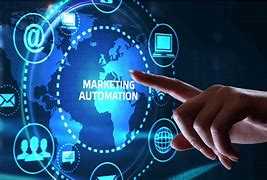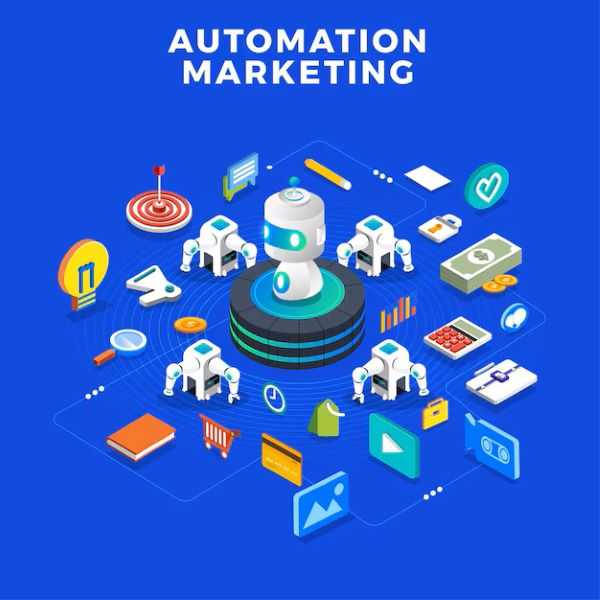Simple Process To Benefit From Marketing Automation

Marketing automation represents a collection of technologies designed to streamline and expedite the often-labor-intensive tasks involved in modern marketing and sales. As businesses navigate increasingly complex environments, automation offers a way to simplify operations and improve efficiency.
This technology can automate tasks such as lead qualification and digital campaign design, allowing businesses to focus on strategic growth rather than repetitive manual work.
By leveraging marketing automation, companies can execute digital marketing strategies without manually sending each email, message, campaign, or post.
Advanced automation tools facilitate the creation of well-designed content, target specific audiences, and trigger actions based on schedules or customer behavior. Once a campaign is launched, marketing automation allows you to shift focus to other projects while the system continues to drive revenue and ROI, all while saving time and resources.

Advantages of Marketing Automation
Marketing automation provides several key benefits:
1. Customization
Automation enhances customer experiences by enabling A/B testing, customer segmentation, and content retargeting. These features allow for personalized messaging tailored to specific timelines, which can lead to increased brand loyalty.
2. Cost Savings
Automation reduces the need for extensive resources by handling repetitive tasks. This efficiency allows your team to scale marketing efforts without proportional increases in staff or time spent.
3. Time Efficiency
With automation managing routine tasks, your team can redirect their focus toward more complex projects. This shift allows for greater engagement with leads rather than spending time on manual processes.
4. Content Prioritization
Automation tools help prioritize content based on performance data gathered from A/B testing. This enables your team to focus on content that resonates with your audience and fosters a loyal customer base.
5. Consistent Engagement
Automated systems ensure that your teams can interact with customers around the clock. By scheduling and triggering content, you maintain engagement and provide relevant information tailored to your customers' interests.
Impact on Clients
Marketing automation enhances the client experience in several ways:
1. Cross-Channel Consistency
Automation allows businesses to monitor customer interactions across different channels and deliver tailored messages accordingly. This approach ensures a cohesive experience, avoiding repetitive content and improving the overall customer journey.
2. Eliminating Team Silos
Effective marketing automation solutions break down barriers between teams by integrating data from various sources. This integration facilitates smoother transitions from marketing to sales and offers a comprehensive view of the customer journey.
3. Personalized Experiences
Consumers expect personalized interactions with brands. Research indicates that 71% of customers prefer individualized service. Marketing automation leverages data from customer interactions to anticipate needs and deliver relevant content.

What is the Process of Marketing Automation
Marketing automation is a dynamic and efficient strategy that leverages various customer interactions, such as emails, website visits, app usage, social media posts, and more, to collect and analyze data. This data provides a comprehensive 360-degree view of each consumer, which serves as the foundation for targeted marketing efforts.
To illustrate how marketing automation works, consider a scenario where, for example, a marketer is using a webinar to advertise a good or service. Here's how the process unfolds:
1. Invitation Email
The first step involves extending an invitation to prospective leads via email to attend the webinar. This initial contact sets the stage for further engagement and data collection.
2. Form Submission
Interested leads must fill out a form to RSVP for the webinar. This form submission is a critical interaction, as it allows the marketing automation technology to capture essential data about the lead. Once the form is submitted, the leads are automatically added to a specific email list designated for the webinar.
3. Nurture Campaign
With the leads now organized in a designated email list, a nurture campaign begins. This campaign consists of a series of automated emails designed to engage and inform the leads.
The first email in the sequence typically serves as a thank-you message for registering for the webinar. This immediate acknowledgment helps establish a positive initial impression.
4. Sales Transfer
As leads engage with the nurture campaign and download the case study, they are automatically transferred to the sales team for follow-up. This transfer is a crucial step in the process, as it indicates that the leads have moved further down the marketing funnel. By this point, they are more qualified and closer to making a purchase decision.
5. Efficiency and Effectiveness
One of the key benefits of marketing automation is its ability to streamline and optimize the entire marketing process. By automating repetitive tasks such as email sending, data collection, and lead scoring, marketers can focus on more strategic activities that require human insight and creativity. This not only saves time but also ensures that marketing efforts are more consistent and scalable.
6. Scalability
Marketing automation is particularly advantageous for businesses with large customer bases. Manually managing and personalizing interactions for millions of customers would be an impossible task without automation. However, with marketing automation, businesses can efficiently and effectively deliver individualized experiences to a vast number of consumers. This scalability is essential for growth and helps companies maintain a high level of customer satisfaction.
Top Tools for Marketing Campaign Automation
To effectively manage and streamline marketing campaigns, look for these essential features in automation tools:
1. Scheduling Tools
These features enable you to plan and distribute content through email, social media, and other channels at optimal times for your audience.
2. Triggered Content and Retargeting
Automation can follow up with customers immediately after specific actions, maintaining engagement and advancing them through the sales funnel.
3. Segmentation and Personas
Automation tools gather and present consumer data in ways that support data-driven decision-making, helping to tailor marketing strategies to different audience segments.
4. Optimization and Recommendations
Tools that offer optimization and recommendations help steer interactions based on customer priorities, making each engagement more impactful.
5. Automated Email Correspondence
Automation can handle repetitive and practical emails, such as welcome messages or cart abandonment reminders, saving time and maintaining consistency.
Best Practices for Marketing Automation
To maximize the potential of marketing automation, consider these best practices:
1. Focus on the Customer Journey
Align your automation objectives with the customer journey to ensure that your marketing efforts prioritize the customer experience.
2. Set Clear Goals
Define specific goals for your automation efforts. This will guide your metrics, direct your team’s focus, and help evaluate the effectiveness of your campaigns, providing valuable insights for future planning.
3. Encourage Team Collaboration
Ensure that all teams are aligned and engaged with the marketing automation software. Collaboration enhances data sharing and improves the overall customer experience.
4. Automate High-Impact Tasks
Prioritize automating tasks that will have the most significant impact on your team’s efficiency and results. Focus on tasks that offer the quickest returns and demonstrate the value of your automation investment.
5. Choose the Right Tool
Select automation software that aligns with your goals and business needs. Consider whether the tool supports lead management, social media posting, automated emails, or other critical functions to ensure it meets your requirements.
Author Bio
Writer comprises full-time and freelance writers that form an integral part of the Editorial team of Hubslides working on different stages of content writing and publishing with overall goals of enriching the readers' knowledge through research and publishing of quality content.
Article Comments
No Comments!
At present there are zero comments on this article.
Why not be the first to make a comment?
Similar Articles
Sponsor
Search Articles
Experts Column
Latest Articles
Featured Articles
Most Popular Articles












